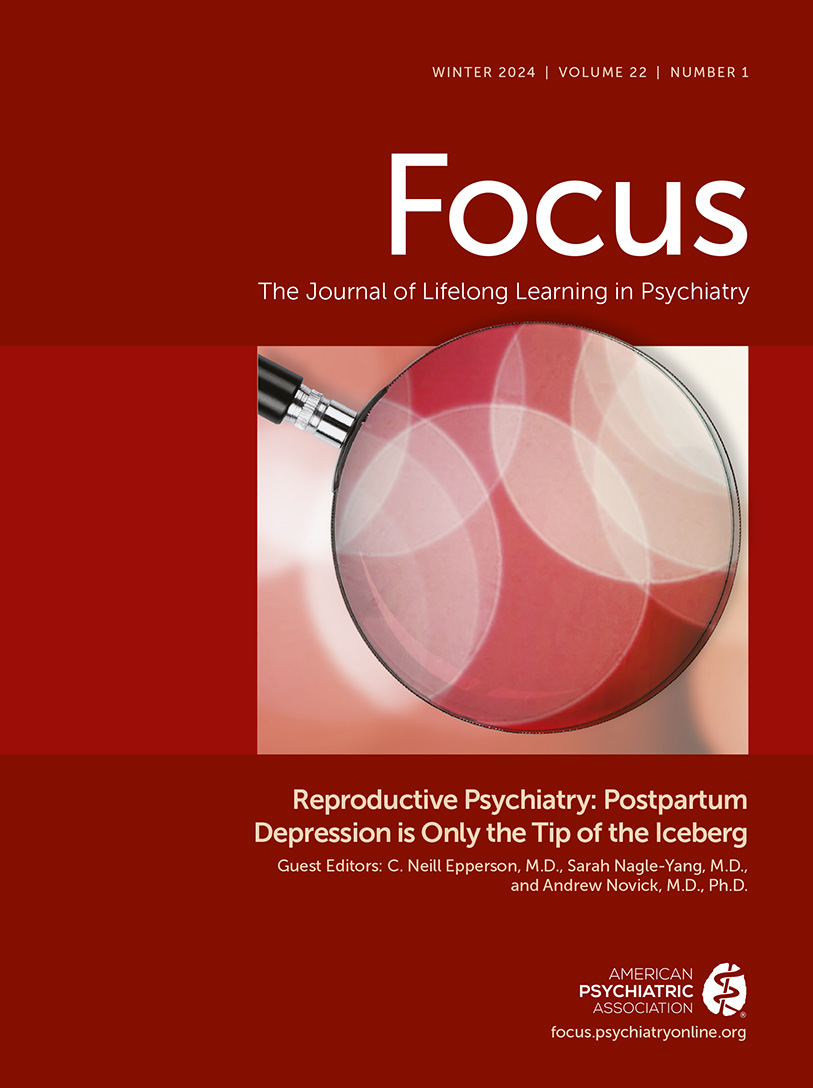The Psychiatrist’s Role in Treating Perinatal Opioid Use Disorder and Reducing Maternal Mortality
Abstract
Drug overdose is a leading cause of maternal mortality. Psychiatrists can play a critical role in reducing these deaths by delivering effective evidence-based treatments for perinatal opioid use disorder (POUD), including the use of buprenorphine. Medications for POUD (i.e., buprenorphine, methadone) are life-saving treatments, but only half of those who are diagnosed as having POUD will receive this treatment, which can result in an increased risk for return to opioid use, overdose, and death. Psychiatrists are well positioned to prescribe buprenorphine given the Drug Enforcement Administration’s (DEA) removal of the requirement to submit a Notice of Intent to prescribe buprenorphine for the treatment of opioid use disorders. Psychiatrists who have a current DEA registration that includes Schedule III authority may now prescribe buprenorphine for opioid use disorders; the training requirements to do so are outlined herein. This article reviews the standard of care for screening, diagnosis, and treatment of POUD, and prescribing buprenorphine for POUD, as well as shared decision-making for medication selection, induction, and maintenance of buprenorphine during pregnancy, labor and delivery, and the postpartum year.
Access content
To read the fulltext, please use one of the options below to sign in or purchase access.- Personal login
- Institutional Login
- Sign in via OpenAthens
- Register for access
-
Please login/register if you wish to pair your device and check access availability.
Not a subscriber?
PsychiatryOnline subscription options offer access to the DSM-5 library, books, journals, CME, and patient resources. This all-in-one virtual library provides psychiatrists and mental health professionals with key resources for diagnosis, treatment, research, and professional development.
Need more help? PsychiatryOnline Customer Service may be reached by emailing [email protected] or by calling 800-368-5777 (in the U.S.) or 703-907-7322 (outside the U.S.).



